Best cannabis nutrients and feeding schedule
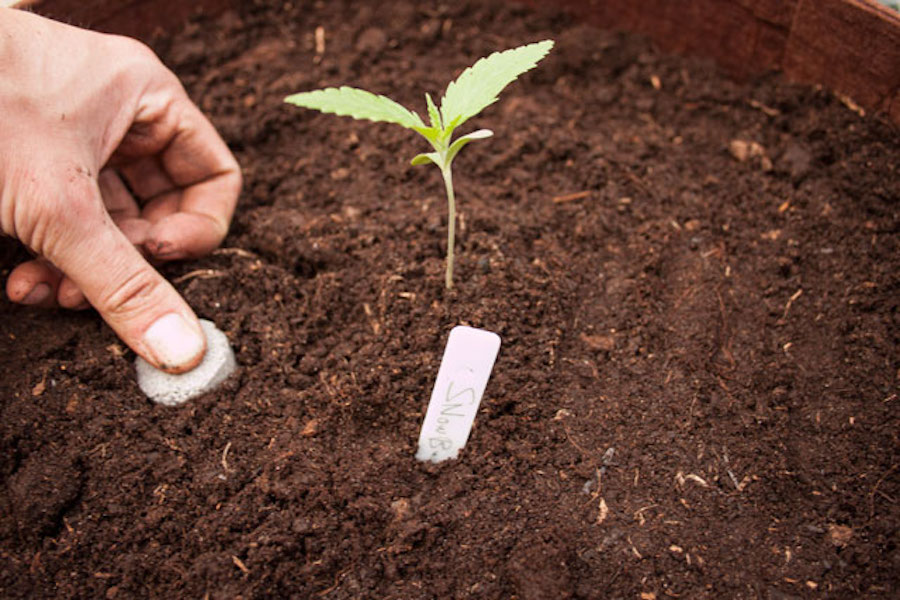
Getting the best from your cannabis seeds will depend heavily on the environmental conditions and cannabis nutrients provided to them. Get the feeding schedule and grow room conditions wrong and you will severely compromise harvest quality and yields.
One of the most common mistakes in cannabis cultivation is the tendency, especially for less experienced growers, to over-feed (and over-water) their plants. This reduces root growth below ground and can permanently stunt (limit) growth above ground. Your goal should be to keep your plants in the nutrient ‘sweet spot’, without underfeeding/overfeeding, from seed to harvest. This guide shows you some ways to do just that.
Macro and micro cannabis nutrients explained
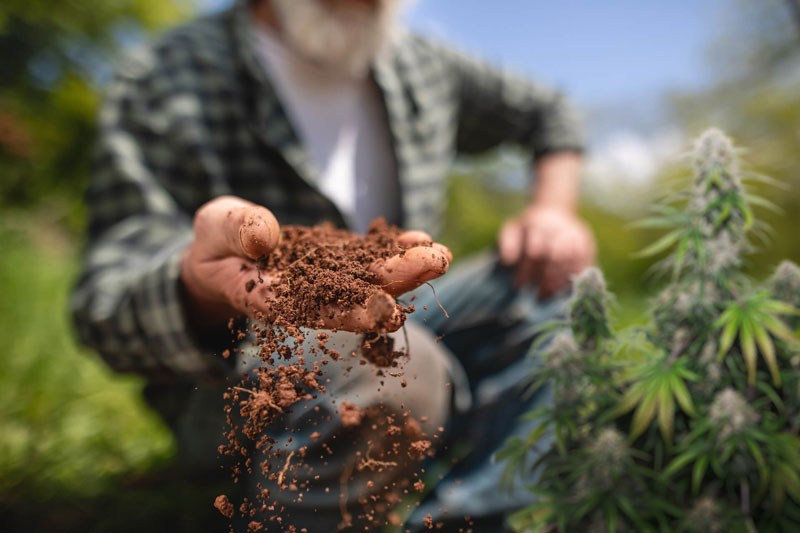
The most frequently discussed cannabis nutrients tend to be the main ‘NPK’ macro nutrients. These are the base cannabis nutrients which tend to be rich in the key minerals Nitrogen (N), Phosphorus (P) and Potassium (K).
NPK based nutrients provide the essentials for cannabis plants, just as protein, carbohydrates and fat are basic dietary ingredients for many animals. In addition, cannabis can absorb Carbon from atmospheric Carbon Dioxide gas (CO2) as well as Hydrogen and Oxygen from air and water.
But cannabis needs much more than just the essential minerals. This is where the micro nutrients are important. Micro nutrients are the trace minerals and vitamins required which allow your plants to achieve optimum health and growth. This includes elements such as Copper, Boron, Manganese, Calcium, Magnesium, Iron and many others.
More complicated organic compounds and vitamins, such as Fulvic acid, Humic acid etc also greatly help your cannabis plants. The choice of cannabis nutrient brands is extensive and each manufacturer has their own closely guarded recipes.
What are the main cannabis nutrients and their effects?
Macro nutrients from air and water
Carbon, Hydrogen and Oxygen are macro cannabis nutrients from air and water. This makes them easy to acquire, meaning that shortages of these nutrients are not usually encountered.
| Carbon (C) |
| Carbon is absorbed via CO2 gas through pores on leaf surfaces known as stomata. Carbon is used extensively throughout the plant for growth where it is a key building block of cellulose. |
| Hydrogen (H) |
| Photosynthesis allows light energy to be used by the plant to split water into hydrogen and oxygen ions which are then used by the plant. |
| Oxygen (O) |
| Just like Hydrogen, Oxygen is derived from water using energy derived from photosynthesis. Oxygen can also be absorbed through the leaves and roots. |
Macro nutrients from soil
Nitrogen, Potassium and Phosphorus can be taken from soil. Those using cannabis nutrients may notice data on their nutrient labels which details the specific ratios of N, P & K.
| Nitrogen (N) |
| Nitrogen is a mobile nutrient when in the form of a nitrate. Soil based nitrogen requires microbial action to convert it into a plant-usable form. Nitrogen is used extensively for growth and development. It is a building block for protein formation. |
| Phosphorus (P) |
| Phosphorus plays a key role in the transfer of energy from photosynthesis. It is also critical to the usage of starches and sugars. Also vital for bloom, often supplied via a ‘PK’ boost. |
| Potassium (K) |
| Potassium is important for plant growth, root growth/structure, tolerance of stress and metabolic functions. It is also used in creation of enzymes and proteins. |
Cannabis micronutrients
By definition, cannabis micronutrients are not required in high concentrations. But they are vital and an absence of micronutrients could result in serious issues. There are many micronutrients, here are some of the more important
| Magnesium (Mg) |
| A mobile nutrient which is a key part of the chlorophyll molecule. Without it your cannabis plants will not survive. |
| Iron (Fe) |
| Iron is a semi mobile nutrient, used in the conversion of light energy into sugars. Also important for use in enzymes and plant pigments. |
| Copper (Cu) |
| Copper is a mobile nutrient used in small quantities during photosynthesis and also to help plants metabolise proteins and carbohydrates (sugars). |
| Calcium (Ca) |
| Used to increase structural strength and rigidity of the plant. Also important for enzyme creation/use. |
| Manganese (Mn) |
| Essential for pollen and pollen related structures such as pollen tubes. Also an important minor micronutrient used in respiration, photosynthesis and Nitrogen use. |
| Molybdenum (Mo) |
| Vital for enzyme related plant biochemistry. |
| Sulphur/Sulfur (S) |
| Sulphur is semi mobile and required in only trace quantities for use in creation of enzymes, proteins, amino acids and vitamins. |
| Zinc (Zn) |
| Zinc is effective at very small doses, an essential immobile nutrient for enzymes/proteins and for synthesis of plant growth hormone. |
| Silicon (Si) |
| A particularly popular additive in recent years, Silicon helps strengthen the plant cells which assists vigorous growth. |
| Boron (B) |
| Important for structural strength of plant cell walls where it helps crosslink the carbohydrates. |
Mobile vs Immobile cannabis nutrients
Mobile nutrients can be moved around the plant as and when required. On the other hand, mobile nutrients tend to be prioritised towards new growth. Any mobile nutrient deficiencies are therefore first seen in old leaf growth.
Immobile nutrients are more difficult to move around the plant and their deficiency tends to be first seen in new growth due to the lack of access to these nutrients. The following guide may be a useful guide to the type of effects seen with the most common nutrient deficiencies.
Organic cannabis nutrients vs synthetic fertilisers
Growers using systems such as hydroponic DWC or NFT systems will be familiar with bottled ionic ‘synthetic’ mineral nutrients. All the necessary chemicals required for growth are dissolved in water which means they won’t clog up the pipes in a hydroponic system. That’s because the minerals are dissolved in the form of soluble ions which are easy for roots to absorb and transport around the plant.
These synthetic cannabis ‘mineral’ fertilisers are quite different from bottles of e.g. organic nutrients which may need shaking before use to ensure any suspended solids are thoroughly distributed. Organic cannabis nutrients can be broken down by microbial action in the soil to yield useful food for plant growth. But organic nutrients tend not to be used in hydroponic systems due to risks of clogging pipework, pumps etc.
Best nutrients for outdoor cannabis plants
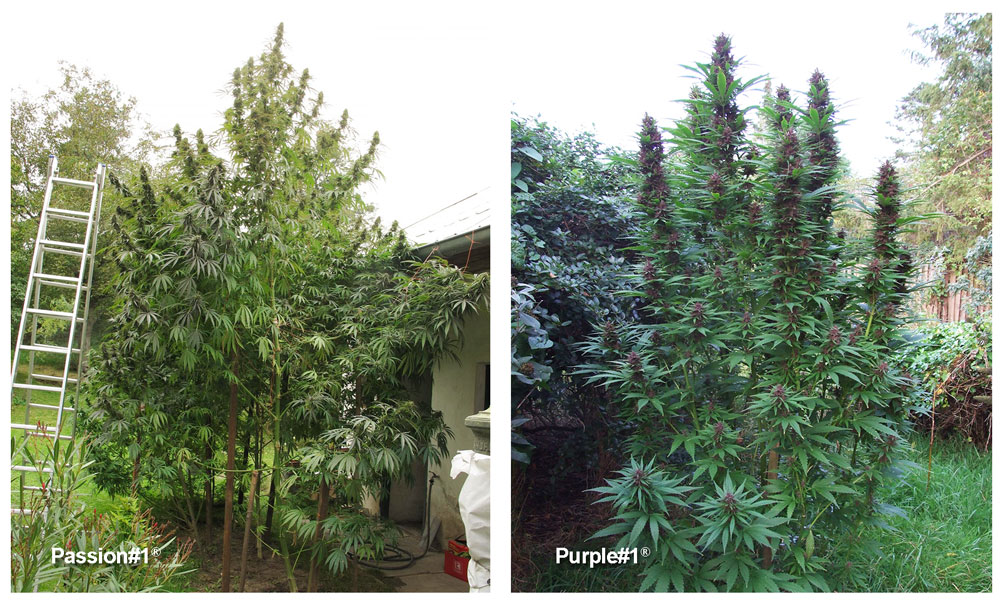
In good quality moist, nutritious outdoor soil you may not need to add any additional nutrients for your outdoor cannabis plants. Cannabis has been growing successfully in the wild for thousands of years without any help from man. But that doesn’t mean that every single wild cannabis plant achieves maximum yield and the highest THC levels. If you are growing outdoor cannabis plants, you may find that growth and harvest quality can be improved with the careful use of nutrients.
Many outdoor growers like to use a few slow-release organic fertilisers in the ground. BioTabs are fully proven and highly recommended. But you can also use more natural methods such as preparing your soil well in advance of the grow with plenty of well-rotted manure, seaweed, blood/fish/bone meal etc.
Some outdoor growers will also monitor their plants and when necessary may offer a liquid top dressing of diluted fertiliser. Use of general-purpose bloom nutrients when the plant is hungry during bloom is a particularly popular and effective way of boosting harvest quality/quantity.
When to start feeding outdoor cannabis plants?
The experienced cannabis grower will be able to ‘read’ the signs from their cannabis plant that it is in need of extra nutrition. But precise timings of when to start feeding outdoor cannabis plants will depend on local conditions. If the plant is rooted into a small container you may need to feed your plant every day as she nears harvest. However, if rooted directly into good quality soil you may only wish to consider occasional use of general-purpose bloom nutrients during the flowering phase.
Best nutrients for indoor cannabis plants
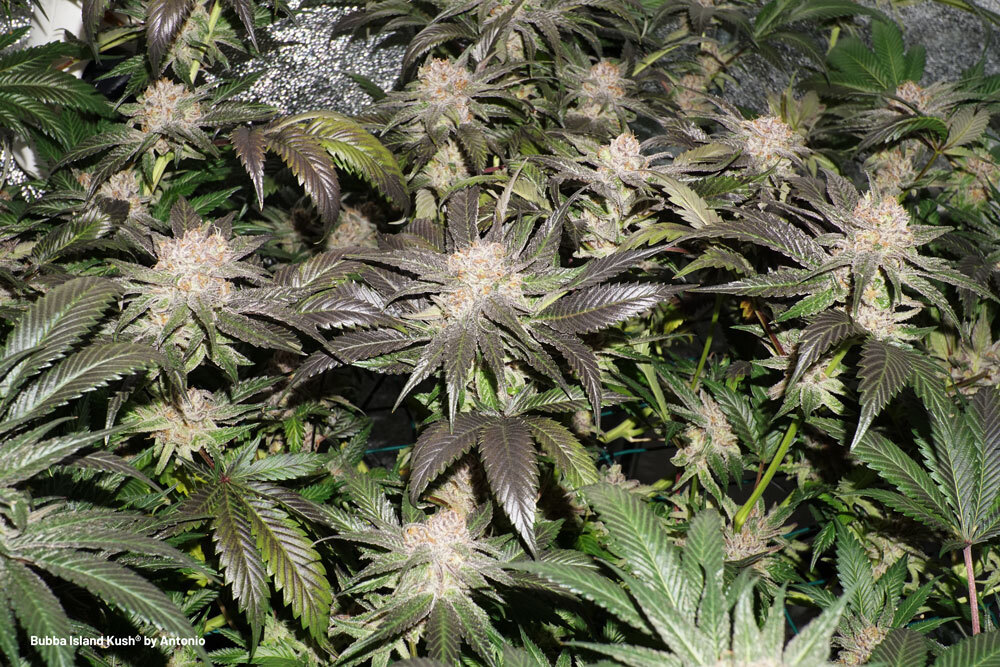
Many experienced growers settle on a particular brand of cannabis nutrients and develop an expert level of familiarity with those nutrients. It’s difficult to recommend any one specific brand since so many of the nutrient companies have fully usable product lines. But one strong piece of advice, especially for less experienced growers, is to keep cannabis nutrition as simple as possible. That’s because it is an area where accidental dosing mistakes can happen with potentially serious consequences.
As previously mentioned, slow-release organic nutrients such as those from BioTabs can remove some of the uncertainty and complexity for less experienced growers. Using them, you are able to simply add water through the grow, with perhaps only a light bloom feed required toward the end.
One other tip for those worried about getting cannabis nutrition wrong is to consider growing in large containers of quality soil, e.g. 50 litre airpots. These will have sufficient nutrition for a lengthy period – though the precise length of time depends on several factors. This includes the soil quality and plant size.
A ‘light’ soil mix will be depleted of it’s nutrients faster than a heavier soil blend fortified with added nutrients. The size of your plant will also affect how long the nutrients last in a large container of soil. A large cannabis plant will consume the nutrition faster than a small/medium sized plant.
Use of slow release organic cannabis nutrients in the soil can further extend the length of time that the soil will provide nutrition to your plant. If you are growing an autoflower in large airpots of soil, you may only have to think about additional bloom nutrition in the last stages.

When to start feeding indoor cannabis plants?
If growing indoors using small 1-2 litre plant containers you may need to add light feeds of veg (grow) nutrients after a few weeks. Conversely, if growing in large containers (50-75 litres) of quality soil with slow release organic nutrients you may not need to add any additional nutrients at all, or only at the end of bloom.
If growing in hydroponics the plants are totally dependent on you for all feeding requirements from seedling to harvest. Unfortunately, there isn’t a single simple answer for when you need to start feeding your indoor cannabis plants. Everything depends on your specific grow method and conditions.
Cannabis nutrient feeding schedule by growth stage
As the cannabis plant grows the required nutrients also change. In early growth a diet rich in Nitrogen supports growth of leaves, branches and roots. In the cannabis flowering stage, more nutrients are required in general, with a specific requirement for more Phosphorus and Potassium.
It’s important to state that each plant grown from cannabis seed is different and should be treated as an individual. Even when growing several plants from the same variety of cannabis seeds, the experienced grower may notice that the plants have subtly different nutrient requirements.
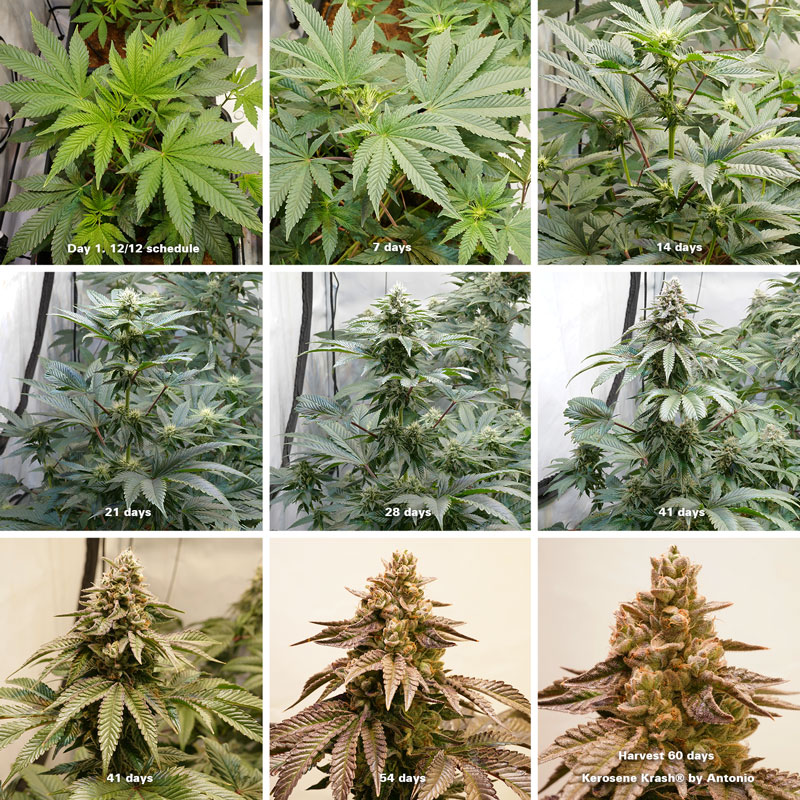
General advice on cannabis nutrients and feeding schedule
It is better to slightly underfeed your cannabis plants than to over feed them, which can cause permanent damage in severe cases. The nutrients charts provided by the supplier should be treated as a guide rather than firm rules. Each plant can have different feed requirements, even when grown from cannabis seeds of the same strain.
In general, it is better to err on the side of caution and slightly underfeed your plants in order to establish the ‘starting point’ for nutrient concentrations. You can always increase nutrient levels in subsequent feeds. But you can’t undo the damage done by over-feeding your cannabis plants.
Use of calibrated EC and pH meters is a standard practice by many experienced growers, who also often allow their water to ‘stand’ overnight to release any Chlorine and also to equilibrate temperature with the grow room before using it to make their nutrients. Avoid the rookie error of making your nutrient feeds with cold tap water and then ‘cold-shocking’ your plant with cold water/feed. It will significantly slow down plant growth,
Related:
How pH affects cannabis plants
Cannabis seedling stage nutrient requirements
Some cannabis nutrient companies have specialist seedling nutrients. These are useful for hydroponic growers and are very diluted to avoid ‘burning’ the delicate cannabis roots. When growing in good quality soil there is often no need to add nutrients when in the seedling stage, doing so may damage the delicate seedlings.
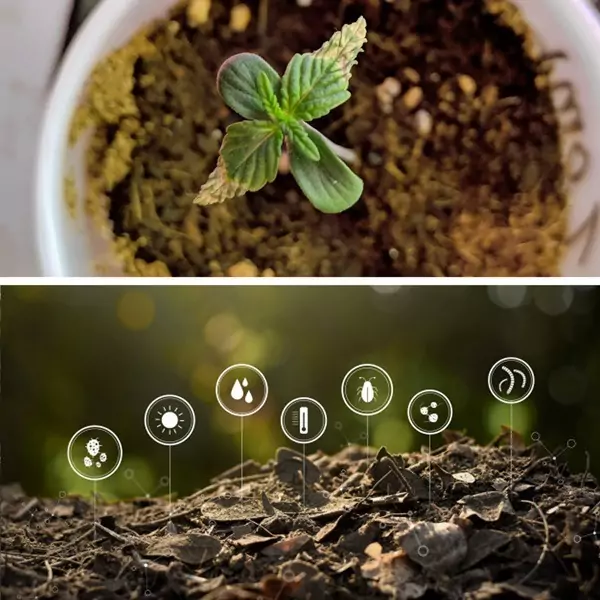
Related:
Cannabis seedling stage how to guide
Cannabis vegetative stage nutrient requirements
During the cannabis vegetative stage, the nutrients tend to be rich in Nitrogen which supports early growth. During veg growth the overall nutrient demand tends to be smaller than that in bloom, when the plant is producing higher amounts of biomass. Requirement for light is also less during vegetative growth. If too much nutrition is given during early growth you can easily permanently stunt your plant and prevent it reaching full potential.

Cannabis flowering stage nutrient requirements
As the cannabis plant transitions into the flowering stage, nutritional requirements change as vegetative growth gives way to bloom and resin production. Bloom nutrients tend to have a lower Nitrogen content and a higher ratio of Phosphorus and Potassium.
Related:
Cannabis growth stages breakdown
Cannabis nutrients frequently asked questions
Here are some of the most common FAQs about cannabis nutrients.
Can you grow cannabis without nutrients?
Yes, it happens all the time in nature. The only reason to add nutrients is to optimise growth conditions and improve the eventual harvest quality/yield.
Do autoflowering cannabis plants need specific nutrients?
You can buy them, but they are not essential. Many of those that grow autoflower seeds use the same nutrient range as they use for their photoperiod feminised cannabis seeds.
Do you need different nutrients for cannabis in soil vs in coco?
You can buy specialist cannabis nutrients for coco and many coco fibre growers would only use specialist coco nutrients. These often come in two bottles, ‘A’ and ‘B’, which are diluted and then mixed. Of course, you can also supplement these with slow release organic nutrients such as BioTabs.
When and how to use nutrients for hydroponic cannabis?
When growing hydroponic cannabis, the plants depend completely on the grower for nutrition. There is no slow release soil action to supply an ongoing release of nutrients. Instead, the successful hydroponics grower has to manage all the necessary technical challenges in order to ensure that the hydroponic plants are maintained in the nutrient sweet spot from seed to harvest. This isn’t necessarily easy, many growers prefer growing in soil/coco.
Related:
Hydroponics cannabis grow guide
How to identify cannabis nutrient issues and fix them?
Using your experience, or an online nutrient deficiencies guide, you can often spot signs of nutrient issues from the plant/leaf appearance. Fixing nutrient issues is generally more difficult than preventing them.

Soil growers seeing serious nutrient issues may wish to flush their soil with plenty of pure water for several days in a row and then try to ‘start again’ with nutrient additions. But depending on the severity of the issues, a fix may not always be possible or easy.
If you have struggled repeatedly with the complexities of cannabis nutrients it may be worth considering a different grow method completely. One option that may minimise your nutrient struggles is to grow in large containers (50-75 litres) of good quality soil with some slow release nutrients such as those from BioTabs. You may only need to add water through the grow, or perhaps water them with a light general purpose bloom feed in the last month or so.
Where to buy organic cannabis nutrients?
Many growers will visit their local grow shop/hydroponics shop for their nutrients. But you can also get them online. The advantage of a good local grow shop with a genuinely knowledgeable owner is that you can get good advice which may help you cut through the often-bewildering array of choices.
For less experienced growers it is highly recommended to start with the simplest and smallest range of nutrients – with less to go wrong your chances of success are maximised.
Cannabis nutrients, plant health and THC rich buds
Optimising your grow room (and perhaps simplifying your grow method) so that issues are avoided is far easier than trying to solve established nutrient issues. Once you get into a routine and gain more experience you may find that nutrient issues become a thing of the past. Enjoy your grow and remember that many growers find that simplification of the grow/nutrients can be a big help.
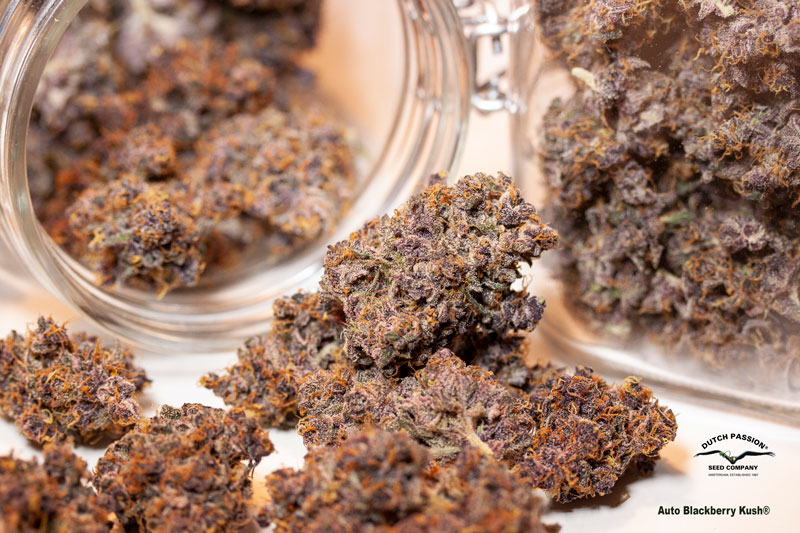



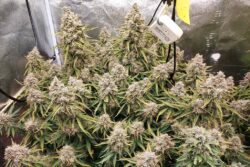








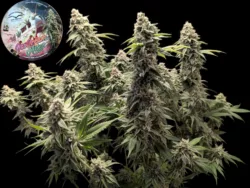
4 Comments. Leave new
I, grow outdoors here in western N.Y, what organic fertilizer. Should I, be using n p k and how often , when do I stop , what should I, give them for best flavor , thanks john
Hello,
in my country i have only fertilizer NPK 20-20-20 and 12-12-17. I cannot find lower concentrations
What is your advise to me to overcome this issue?
Thanks
very nice blog easy way to explain nutrients for cannabis. excellently describe cannabis seeds. Thank you for writing this blog.
I’m growing autoflowering plants in large fabric pots with around 23 litres of 50/50 mixture of vitalink soil and coco coir, using 3 biotabs per pot. I’m beginning week 9 of the grow and would like to know if I should add a bloom feed during the final weeks.
Thanks